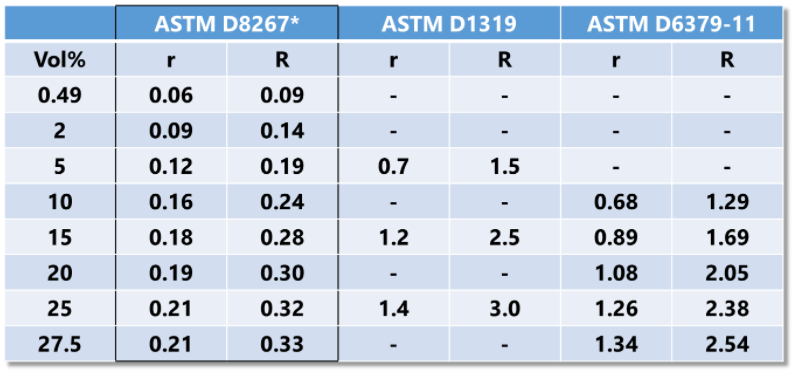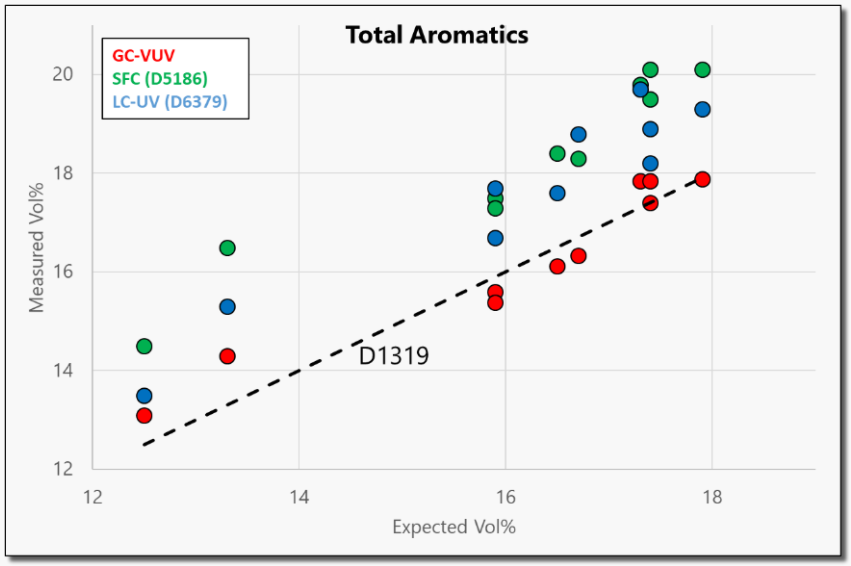
The ASTM D8267 Jet Fuel Analyzer determines total aromatic, monoaromatic, and diaromatic content in jet fuels. Compound class and other individual components are determined by percent mass or percent volume. The official name of the method is:
“Standard Test Method for the Determination of Total Aromatic, Monaromatic and Diaromatic Content of Aviation Turbine Fuels Using Gas Chromatography with Vacuum Ultraviolet Absorption Spectroscopy Detection (GC-VUV)”
The analysis uses a GC equipped with VUV Analytics signature VUV detector, a single 30 meter column, and can be done in 14 minutes.
Replacement for D1319 (FIA)
Alternatives exist for the FIA “dye method”. ASTM D6379 (HPLC) has a long history and is the alternative method listed in the ASTM D1655 product specification. ASTM D8305 is a recently developed Supercritical Fluid method. D8267 has numerous advantages over all of these methods, including the original D1319 method.
Better Precision
The precision of D8267 is excellent and on average 5 to 10 times better than the current methods prescribed for jet fuel analysis.
Total aromatic repeatability (r) & reproducibility (R):

D8267 performs better than HPLC and SFC:

Other Advantages of D8267
In addition to the short 14 minute analysis time and superior precision there are several other advantages to running D8267:
- No calibration curves required
- No sample prep
- Minimal maintenance
- Lower cost to operate
ASTM D3338 (Heat of Combustion)
D3338 is cited in D1655 and requires aromatic content for the energy content equation. D8267 aromatics can be used in this calculation.
Service, Maintenance, and Support
Envantage engineers are factory trained and prepared to install and support the VUV Analytics VUV detector. Training in the use of VUV AnalyzeTM software is provided.
Contact Us to see if the D8267 Jet Fuel Analyzer is a good fit for your laboratory.

